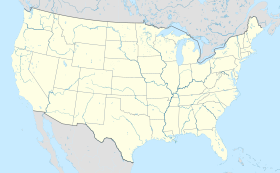Pemaquid Archeological Site
|
Pemaquid Archeological Site
|
|

Foundation holes of the colonial settlement
|
|
| Location | Lincoln County, Maine, USA |
|---|---|
| Nearest city | Bristol, Maine |
| Coordinates | 43°52′41″N 69°31′17″W / 43.87806°N 69.52139°WCoordinates: 43°52′41″N 69°31′17″W / 43.87806°N 69.52139°W |
| Area | 24 acres (9.7 ha) |
| Built | 1610 |
| NRHP Reference # | 69000022 |
| Significant dates | |
| Added to NRHP | December 2, 1969 |
| Designated NHLD | April 12, 1993 |
Colonial Pemaquid State Historic Site is a publicly owned historic property operated by the state of Maine near Pemaquid Beach in Bristol, Maine. The site includes the reconstructed Fort William Henry, archaeological remains of 17th- and 18th-century village buildings and fortifications, and a museum with artifacts found on the site including musket balls, coins, pottery, and early hardware.
Pemaquid was a major regional flashpoint in the late 17th-century and early 18th-century conflicts between English and French settlers, and between English settlers and the local Native population. The site has been of historical and archaeological interest since the late 19th century and has been a state park since 1903. It was listed on the National Register of Historic Places in 1969 (as "Pemaquid Restoration and Museum") and was designated a National Historic Landmark in 1993 (as "Pemaquid Archeological Site").
Colonial Pemaquid is set on a small north-facing peninsula on the south side of the mouth of the Pemaquid River, north of Pemaquid Point, a spit of land in mid-coast Maine. The site is mostly level or gently sloping terrain that has been covered in grass. The site is accessed via a drive from the south, which provides access to parking areas above the main historic settlement area. There is a 20th-century building housing a visitor center and small museum, an 18th-century house that has been repurposed for use as an archaeological laboratory and storage space, and the reconstructed bastion of Fort William Henry at the northwestern tip of the peninsula.
The eastern portion of the site is where the major colonial village was located, and is now only visible as a series of depressions in the grass. The western portion of the site is where Fort William Henry, the 17th-century fortification, and Fort Frederick, the 18th-century fortification, were located. Foundational remnants of some of the buildings remain. Archaeological remains have been judged to have a high state of preservation, since many remains were deep enough to avoid damage when the area was used for agriculture, and those same farming practices resulted in the filling in of cellar holes, further preserving cultural artifacts there.
Pemaquid has a colonial settlement history dating to the early decades of the 17th century, with a succession of conflicts leading the site to be attacked on several occasions and entirely abandoned twice. The area was used by English and French traders and fishermen on a seasonal basis for some time, and the first documented permanent residence was established in 1628. The Pemaquid peninsula, located between the mouth of the Kennebec River in the west and Penobscot Bay to the east, was considered by the French as part of Acadia, which they claimed extended to the Kennebec. The early English settlers traded with English settlements further south, as well as the local Abenaki people and the French, sometimes in opposition to the policies of the formal New England colonies to the south.
...
Wikipedia


